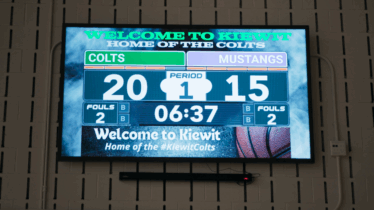According to a new meta-study that summarizes the findings from years of research on one-to-one mobile computing initiatives, mobile ed-tech programs have been linked to higher test scores — but only if they have the right support structures in place. These critical support structures include teacher buy-in, adequate technical support and professional development for teachers, and appropriate use within the curriculum.
The study looked at research on one-to-one laptop programs in particular, but its findings have important implications for all types of mobile learning initiatives. They could help K–12 leaders ensure the success of their own ed-tech programs as they look to equip students with Chromebooks, tablets and other mobile devices.
Ed Tech Is Worth the Investment…
Assistant Professor of Educational Technology at Michigan State University, Binbin Zheng, along with colleagues, analyzed years of studies on the effectiveness of one-to-one laptop programs, including Zheng’s own research, and found that programs taking an all-inclusive approach were associated with many benefits, such as higher test scores in English, math, science and writing.
“In the past couple decades, one-to-one programs have spread widely, but so has debate about whether they are cost-effective and beneficial to educational outcomes,” says Zheng, lead author on the paper. “I believe this technology, if implemented correctly, is worth the cost and effort because it lifts student achievement, enhances engagement and enthusiasm among students, improves teacher-student relationships, and promotes 21st century skills such as technological proficiency and problem solving.”
However, simply equipping students with laptops or mobile devices “doesn’t really help them with anything,” she adds. “Technology should not be implemented for technology’s sake.”
…But Use Must Be Purposeful
To develop their analysis, the researchers reviewed nearly 100 academic studies on one-to-one laptop programs from the past 15 years, although they reported that only 10 of the studies were scientifically accurate and precise enough to use in their meta-analysis.
Leslie Wilson, chief executive officer of the One-to-One Institute, says that the paper’s findings align with her organization’s own observations about the keys to success for any mobile learning initiative — including a major research effort from earlier this decade called Project RED.
“I thought it was a wonderful complement to what we have found in our own research,” she says. “I thought it was very much spot on. You really have to be very purposeful and meaningful in how you use the technology, and it has to be well implemented. Using technology in a very conscious way to support the kinds of learning experiences or activities that you want for students — that’s what makes the difference.”
Last year, the Organization for Economic Cooperation and Development (OECD) made headlines when it released a global study claiming that countries investing heavily in ed-tech programs saw “no noticeable improvement” in international test results for reading, math or science. Many observers pointed to this study as evidence that technology has no measurable outcome on student success — but Wilson says this logic is flawed.
“That’s very narrow thinking, because we also didn’t find student achievement outcomes when we implemented blackboards or overhead projectors,” she notes. “It’s what we do with these tools that matters.”
For instance, if digital devices are used to support an inquiry-based approach to learning, in which students are challenged to research topics and develop answers to open-ended questions, then they will learn to solve problems and think more critically. But if students are just reading textbooks online, then learning outcomes won’t change.
Device Choice Matters
According to Wilson, the meta-study’s findings are applicable to any mobile learning initiative. But “the choice of device is really important,” she says. “It needs to be based on the kind of learner outcomes and activities that you are seeking.”
These may be different for every grade level, she notes. For instance, younger learners may benefit from the ease of use of touch-screen tablets — while older students might require a device with a keyboard for more writing-intensive work, such as a Chromebook or laptop.
Improved writing skills was one of the benefits that Zheng and her colleagues observed from successful ed-tech programs in which each student had a digital device. “Students received more feedback on their writing, edited and revised their papers more often, drew on a wider range of resources to write, and published or shared their work with others more often,” Zheng says.
Are you looking to make the move to a more digital classroom? Check out our full line of educational technology solutions here to find the option that works best for you and your students.







